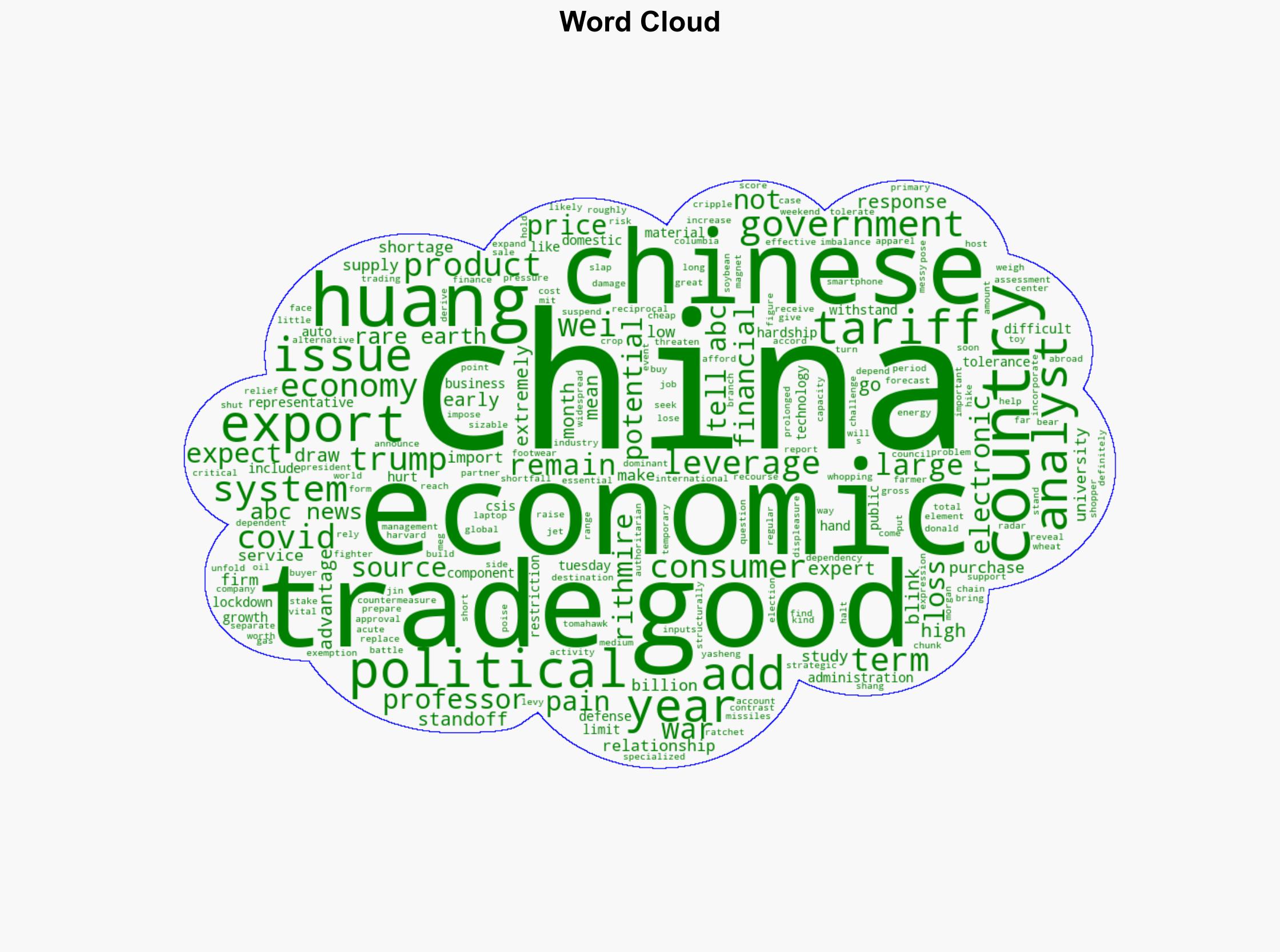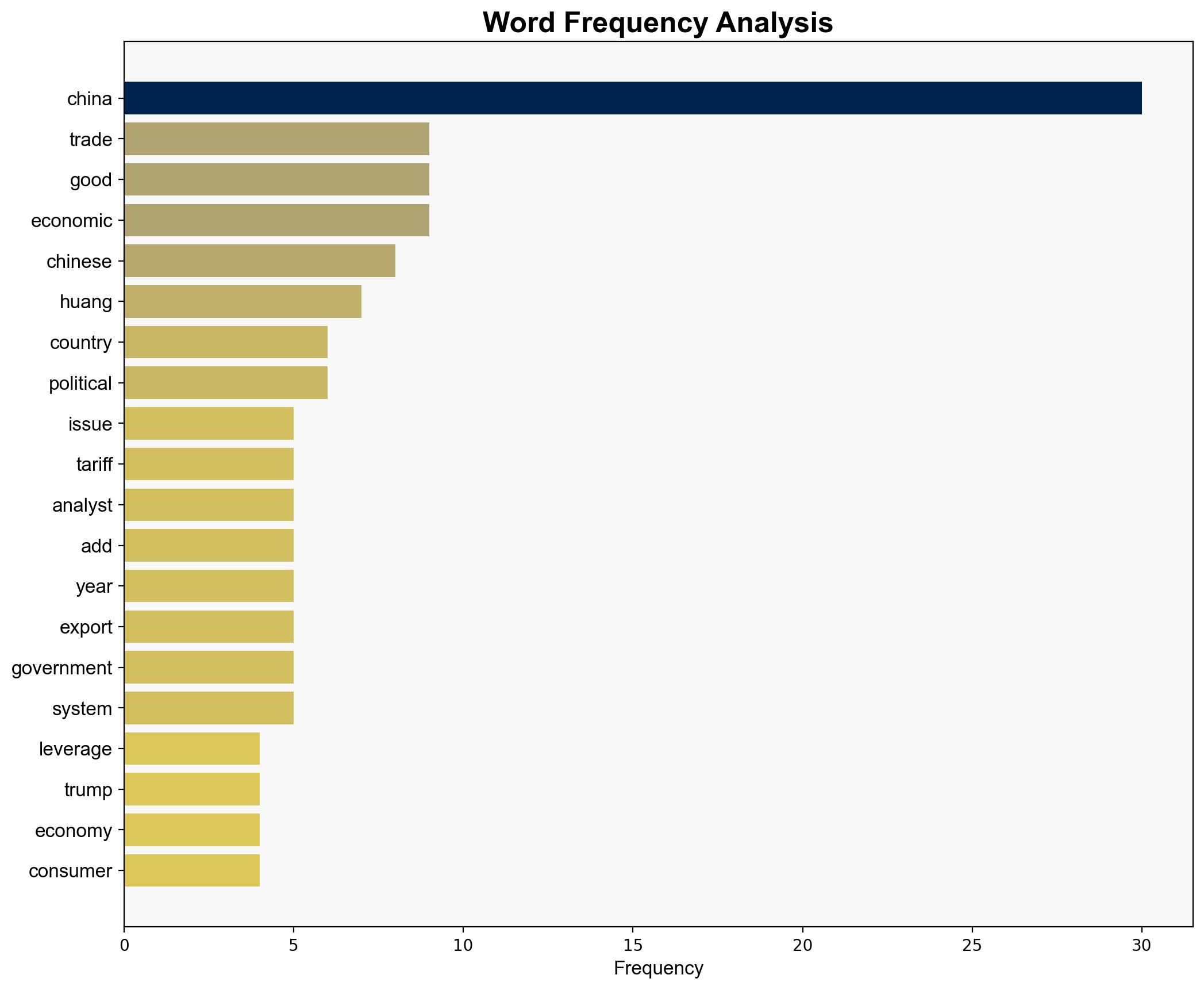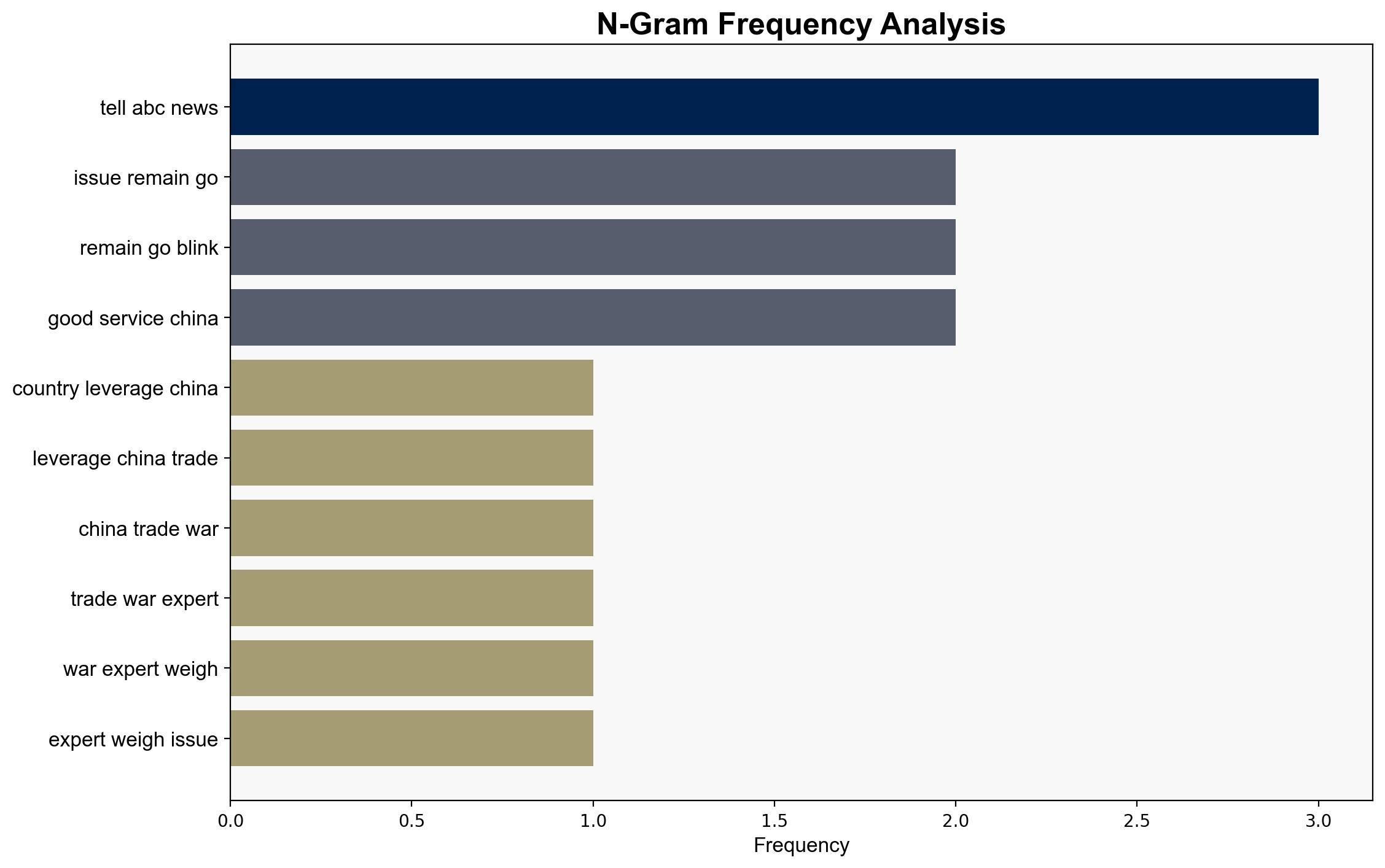Who has more leverage in the US-China trade war – ABC News
Published on: 2025-04-16
Intelligence Report: Who has more leverage in the US-China trade war – ABC News
1. BLUF (Bottom Line Up Front)
The US-China trade war is characterized by reciprocal tariffs and economic countermeasures, with both nations leveraging their economic strengths. The US holds an advantage due to its trade imbalance, importing more from China than it exports. However, this dependency on low-cost Chinese goods poses a risk of price increases for US consumers. Conversely, China faces potential economic slowdown due to reduced exports to the US. The strategic outcome hinges on which nation concedes first, with significant implications for global economic stability.
2. Detailed Analysis
The following structured analytic techniques have been applied for this analysis:
General Analysis
The trade war has escalated with the US imposing 145% tariffs on Chinese goods, while China retaliated with 125% tariffs on US products. The US imports approximately $438 billion worth of goods from China, making it a critical market for Chinese exports. This trade imbalance gives the US leverage but also creates vulnerability due to reliance on affordable Chinese products. China’s economy, while resilient, is projected to experience a 0.7% reduction in GDP growth due to these tariffs. The US, meanwhile, risks job losses in sectors reliant on exports to China, which totaled $143 billion last year.
3. Implications and Strategic Risks
The trade war poses significant risks to global economic stability. The US could face domestic inflation and consumer dissatisfaction due to increased prices on goods. China’s economic growth may slow, affecting global supply chains and markets. Both nations risk damaging their international trade relationships and economic standing. The prolonged standoff could lead to increased geopolitical tensions and impact regional stability in Asia-Pacific.
4. Recommendations and Outlook
Recommendations:
- Encourage diplomatic negotiations to de-escalate tensions and reach a mutually beneficial trade agreement.
- Explore alternative supply chains to reduce dependency on Chinese imports and mitigate price increases.
- Implement policies to support industries and workers affected by the trade war, including retraining programs and economic incentives.
Outlook:
In the best-case scenario, both nations reach a trade agreement that stabilizes economic relations and promotes growth. The worst-case scenario involves prolonged tariffs leading to economic downturns and increased geopolitical tensions. The most likely outcome is a gradual de-escalation with partial agreements, maintaining some level of economic friction but avoiding severe disruptions.
5. Key Individuals and Entities
The report mentions significant individuals such as Yasheng Huang and Shang-Jin Wei, who provide expert analysis on the trade dynamics. Key entities include the US and Chinese governments, as well as major industries affected by the trade policies.




